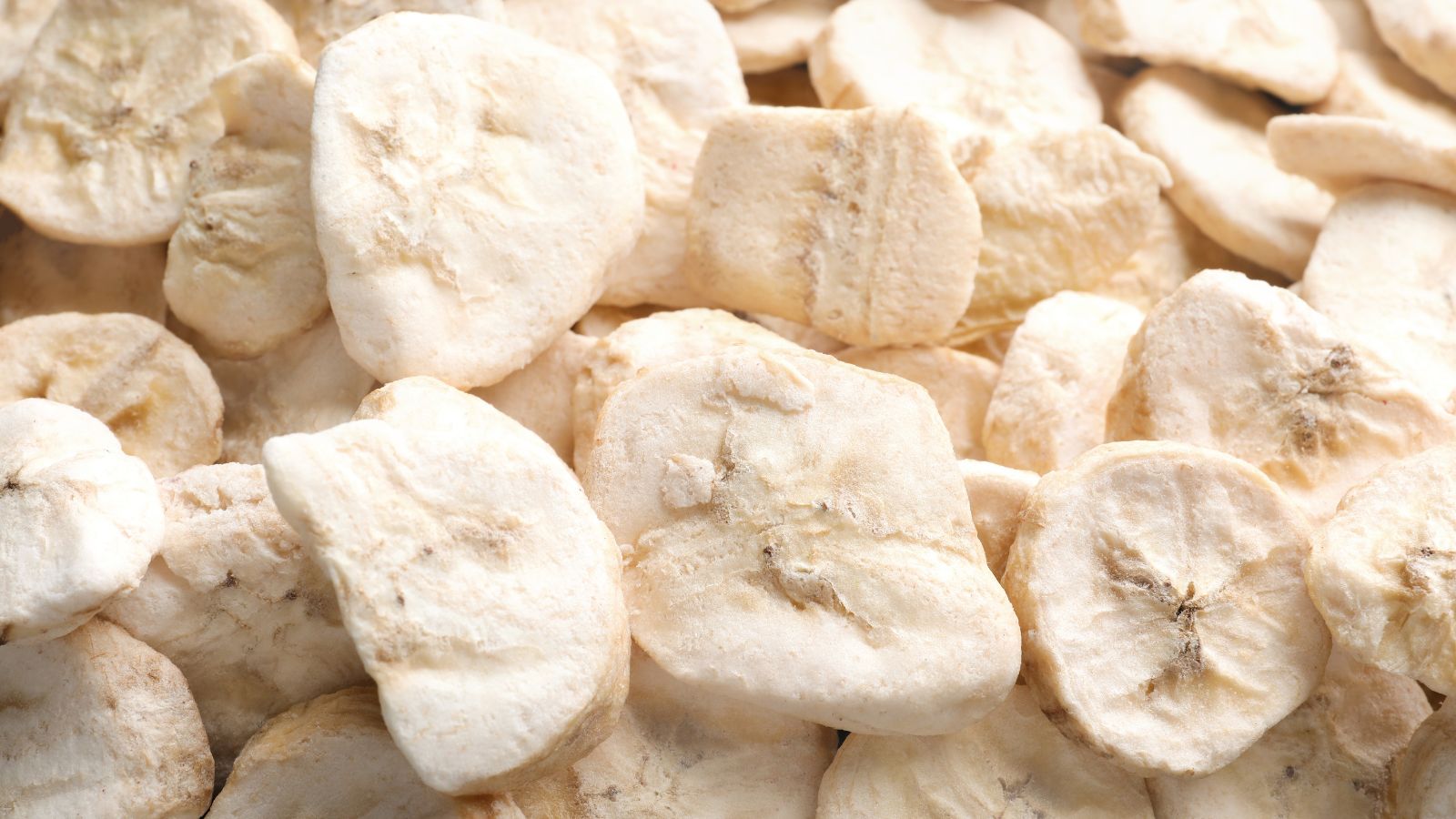
How Long Does Freeze Dried Food Last? The Truth About Shelf Life
Photo Credit: Canva Pro
For long-term storage, freeze-dried food is the best choice because it can last 20 to 30 years if kept in the right way. What if it gets bad? Couldn't freeze-dry these things? The best way to store it is.
All of these questions and more are answered in this guide. Find out how long freeze-dried food lasts, how to store it, is it safe to eat every day, and what the cons are. For decades, your food will stay fresh if you know how.
Do Freeze-Dried Foods Go Bad?
Photo Credit: Canva Pro
How Long Does Freeze-Dried Food Last?
How you store and package freeze-dried food affects how long it will last. If stored in optimal conditions—airtight containers with oxygen absorbers, in a cool and dark place—most freeze-dried foods can last between 20 to 30 years, though some may degrade sooner depending on fat content and storage fluctuations.
Some frozen or canned foods only last a few years. The process of freeze drying gets rid of water, which stops bacteria from growing. Once opened, freeze-dried foods are exposed to air and moisture, significantly reducing their shelf life to a few months to a year, depending on storage conditions.
-
Best freeze dried foods for longevity: Dehydrated fruits and vegetables, as well as meals that are high in nutrients.
-
Key factors: Storage in airtight containers, keeping things cool, and staying away from moisture are three important factors.
-
Signs of spoilage: Off-smelling, soft, or discolored freeze-dried meals are all signs that they have gone bad.
Factors That Affect the Shelf Life of Freeze-Dried Food
The life of freeze-dried food depends on how well it is stored and packed. Using containers that don't let air in helps keep food from going bad, and storing food away from heat keeps it fresh longer.
-
How to store food: For long-term food storage, keep food in a dry, dark place below 70°F.
-
Packaging options: To keep the food dry, you can package it in Mylar bags, glass jars, or vacuum-sealed bags.
-
Air exposure: Frozen vegetables should be eaten within 6 to 12 months of being opened.
What Are the Disadvantages of Freeze-Dried Food?
Photo Credit: Canva Pro
Higher Cost Compared to Other Preservation Methods
The cost of the freeze drying equipment used to freeze dry food makes it more expensive than other ways to keep food fresh. But because it's easy to use and lasts a long time, it's worth the money.
-
Equipment costs: A home freeze dryer can cost between $2,000-$5,000.
-
Price: Freeze-dried meals cost more than canned or dehydrated foods.
-
Bulk buying: If you buy a lot of food at once from Fullyhealthy, you can save money.
Changes in Texture and Some Nutrient Loss
Freeze-drying preserves most nutrients, including proteins and minerals, but water-soluble vitamins like vitamin C and some B vitamins degrade over time, particularly with exposure to light and heat. Unlike frozen food, freeze dried veggies can become crumbly and lightweight.
-
Different textures: Green beans and freeze-dried fruits can be crumbly.
-
Loss of nutrients: Vitamins C and E may break down, but protein and fiber are usually still in most freeze-dried foods.
-
Rehydration issues: Some foods don't return to their original shape as well as others when they are rehydrated.
What Foods Cannot Be Freeze-Dried?
Photo Credit: Canva Pro
Foods With High Fat Content
It's not possible to freeze dry every kind of food. Fat doesn't evaporate like water does, so things that are high in fat don't freeze well. As a result, it becomes harder to get rid of moisture, which shortens the exact shelf life of these foods.
-
Butter and oils: When you freeze-dry butter and oils, they don't dry out right and can go bad quickly.
-
Fatty meats: Bacon and sausage have a shorter shelf life because freeze-drying does not remove fat, which can oxidize over time and lead to rancidity.
-
Dairy: Milk and cheese don't freeze-dry well unless they are ground up.
High-Sugar and Liquid-Based Foods
Some foods can't be freeze-dried because the way they're made makes it hard to remove the water. Foods that have a lot of sugar can stay liquid, which means they can't be stored for a long time.
-
Honey and syrups: Keep honey and syrups sticky and don't let them dry out all the way.
-
Sweets and baked goods: Cakes and pastries don't rehydrate well and fall apart.
-
Jams and jellies: Too much water is held by the sugar and pectin in jams and jellies.
Can Bacteria Grow on Freeze-Dried Food?
Photo Credit: Canva Pro
Does Freeze-Drying Kill Bacteria?
The process of freeze drying keeps the nutritional value of food but does not kill bacteria. It gets rid of water by freezing at very low temperatures and turning the ice into vapor. On the other hand, bacteria can live and start working again when food gets wet.
-
No treatment with heat: Freeze-drying does not use high heat like canning, but the absence of water prevents microbial growth. However, some bacteria can remain dormant and become active if moisture is reintroduced.
-
Microorganisms that are dormant: Bacteria, mold, and viruses can live in dried food.
-
Risks of rehydration: Rehydration with water, especially in improper storage conditions, can reactivate dormant bacteria, making food safety precautions essential.
How to Prevent Bacterial Contamination?
Keeping food safe and fresh requires the right way to store it. Bacteria can't grow back in a sealed container, so it's great for long-term storage.
-
Use airtight packaging: Like Mylar bags, glass jars, and vacuum-sealed bags, to keep moisture out.
-
Low-temperature storage: Keep freeze-dried food out of direct sunlight in a cool, dry place.
-
Stay away from humidity: Wetness can raise bacteria levels, which shortens the food's shelf life.
How Do You Store Freeze-Dried Food for Long-Term?
Best Storage Containers & Conditions
To keep its long shelf life, freeze-dried food needs to be kept in the right way. Not like frozen food, it doesn't need to be kept cold, but it does need to be kept away from air and moisture.
-
Sealed container options: Mylar bags with oxygen absorbers, glass jars, and vacuum-sealed bags are all options for sealed containers.
-
Where to store pantry staples: Keep them somewhere dark, dry, and away from heat sources.
-
Temperature control: To keep food fresh, keep it at low temperatures.
Common Storage Mistakes to Avoid
Freeze-dried meals can go bad faster if they are stored wrong. Always look for damage in the packaging, and keep food away from temperatures that change quickly.
-
Using plastic bags: They don't keep air out and let air in.
-
Placing near heat sources: Putting things near heat sources makes them more likely to go bad.
-
Not labeling food that has been stored: This makes it hard to keep track of pantry staples and when they go bad.
Can You Eat Freeze-Dried Food Every Day?
Is Freeze-Dried Food Safe for Daily Consumption?
Freeze-dried food is good for daily meals because it keeps most of its nutrients. However, even though it gives you all the nutrients you need, depending on it alone for a long time might not be the best idea. The process of freeze drying takes away the water but doesn't change the fiber content, so it's still best to eat fresh food.
-
For a balanced diet: Fresh food is best to add in for variety.
-
Nutritional retention: This substance keeps vitamins and minerals in the body, but it may lose some over time.
-
Controlling how much you eat: Freeze-dried food takes up less space than fresh food due to moisture removal, but it may occupy more space than dehydrated food because it retains its original structure.
Who Benefits Most From Eating Freeze-Dried Food Daily?
Freeze-dried meals are helpful for people who need to store food for a long time or who just want to save time. But the exact amount of time that food can be stored is only a guess, especially when it is exposed to high temperatures.
-
Hikers and campers: It's light and easy to set up.
-
Preppers and emergency storage: When stored properly in airtight packaging away from light, heat, and moisture, freeze-dried food can last for decades without spoilage.
-
People who are busy: Easy, full meals that are ready to eat.
How FullyHealthy Can Help with Freeze-Dried Food
What Makes Fullyhealthy Unique?
FullyHealthy specializes in freeze-dried foods that people with special needs can eat. We offer AIP-compliant, gluten-free, and allergen-free products, which is different from other other food preservation methods. We focus on making freeze-dried meals that are of high quality and still have all of their nutrients.
-
Wide variety: You can choose from a lot of different things, like freeze-dried fruits and vegetables.
-
Health-conscious: Offers choices for people who have to follow strict diets.
Freeze-Dried Food Options at Fullyhealthy
The freeze-drying process is used to make the meals at FullyHealthy. In their selection, you can find freeze-dried vegetables and proteins that are great for storing food for a long time.
-
Wild Zora Freeze Dried Meals: A great alternative to dehydrated food, retaining more flavor.
-
Instant Grain-Free Cereal: A healthy snack that lasts longer than fresh food.
-
Meat & Veggie Bars: Convenient, shelf-stable, and packed with nutritional value.
Final Thoughts
One of the best ways to store food for a long time is to freeze-dry it. If you store it right, it will last for years or even decades. The texture may be different after rehydrating, but the taste stays the same.
Freeze-drying does a better job of making meals that are complete than other methods. But the exact shelf life is just a guess, especially if it is kept in a hot place. Use the right storage methods to keep food fresh.
FAQs
How long does freeze-dried food last?
It has a long shelf life, lasting a few years or decades with proper storage.
Does freeze-dried food keep its original texture?
No, but rehydration restores some of it while keeping the taste intact.
What makes freeze-dried food different from other methods?
The freeze drying process removes moisture while keeping food’s nutritional value.
Can you store freeze-dried food in high temperatures?
No, high temperatures reduce shelf life.
Does freeze-dried food take less space?
Yes, it takes less space than other methods like canning.

Leave a comment